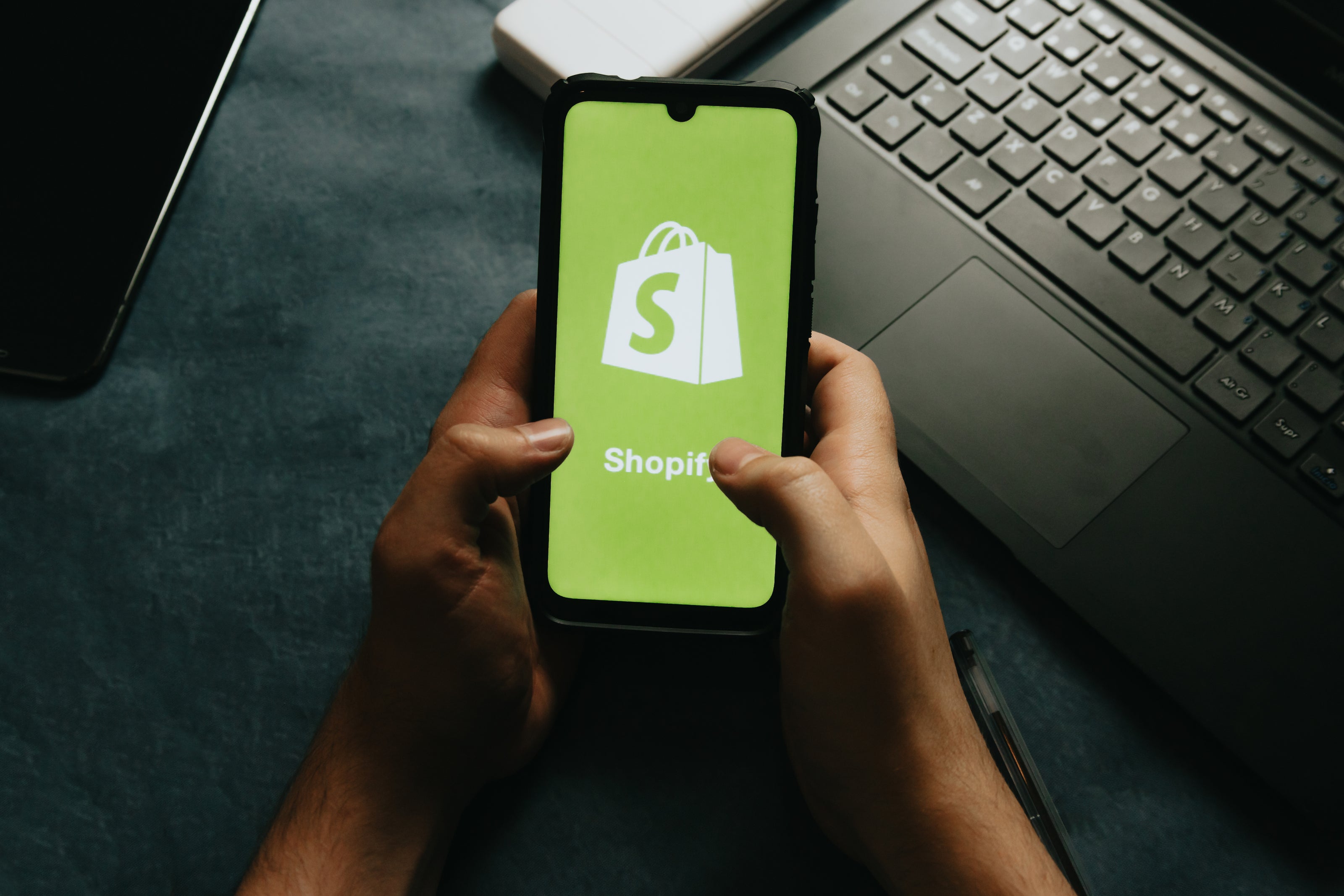
Dropshipping vs. Traditional E-commerce: Which Model is Right for You?
Share
Trying to decide between dropshipping and traditional e-commerce? It's a big choice and each has its own perks and pitfalls. Dropshipping lets you sell stuff without having to stock up on inventory. Sounds easy, right? But then there's traditional e-commerce, where you have more control over your products and brand, but it comes with more responsibility and costs. So, which one's for you? Let's break down the key takeaways to help you figure it out.
Dropshipping vs. Traditional E-commerce - Key Takeaways
- Dropshipping requires less upfront investment but offers less control over product quality and shipping times.
- Traditional e-commerce demands higher startup costs but provides full control over inventory and branding.
- Consider your budget and risk tolerance when choosing between the two models.
- Think about your long-term business goals and which model aligns better with them.
- Evaluate your experience level—dropshipping might be easier for beginners, while traditional e-commerce offers more control for the experienced.
Understanding Dropshipping and Traditional E-commerce
Defining Dropshipping
Dropshipping is a retail method where the store doesn't stock the items it sells. Instead, when an order is placed, the product is bought from a third-party supplier who ships it directly to the customer. This model is popular for its low entry cost and minimal risk, as you don't need to invest in inventory upfront. Platforms like Alibaba are frequently used for sourcing products due to their competitive pricing and variety, making it a go-to for many exploring dropshipping with Alibaba. However, this model comes with its challenges, such as limited control over product quality and shipping times.
Exploring Traditional E-commerce
Traditional e-commerce, on the other hand, involves managing your own inventory and fulfillment processes. This means you have complete control over the quality of your products and the customer experience. You handle everything from stocking to shipping, which can be more costly and complex. But, it offers the advantage of maintaining a strong brand presence and customer loyalty. The need for a robust supply chain management is critical, as eCommerce businesses manage their own inventory and maintain greater control over their supply chain, whereas dropshipping companies depend on third-party suppliers.
Key Differences Between the Models
- Inventory Management: Dropshipping requires no inventory, whereas traditional e-commerce involves stocking and managing products.
- Fulfillment Process: In dropshipping, suppliers handle fulfillment, while in traditional e-commerce, the business manages it.
- Control and Branding: Traditional e-commerce offers greater control over branding and customer experience compared to dropshipping.
- Startup Costs: Dropshipping is typically cheaper to start as it doesn't require upfront inventory purchases, unlike traditional e-commerce.
- Customer Experience: Traditional e-commerce can provide a more reliable customer experience due to direct control over the supply chain.
Choosing between dropshipping and traditional e-commerce depends largely on your business goals, resources and the dropshipping niches you are targeting. Each model has its unique advantages and challenges and the best choice will align with your specific needs and capabilities.
Pros and Cons of Dropshipping
Advantages of Dropshipping
Dropshipping offers several appealing benefits for entrepreneurs looking to dive into the e-commerce world. One of the most significant advantages is the low startup cost. You don't need to invest heavily in inventory upfront, which reduces financial risk. This model allows you to test different products without the burden of unsold stock. Here's a quick look at the benefits:
- Low Initial Investment: Start your business with minimal financial risk as you don't have to purchase inventory beforehand.
- Flexibility in Product Offerings: Easily add or remove products from your store, adapting to market trends and customer preferences.
- Reduced Overhead Costs: Without the need for warehousing or logistics management, your operational expenses are significantly lower.
- Location Independence: Manage your business from anywhere with an internet connection, offering unparalleled flexibility.
Challenges in Dropshipping
Despite its advantages, dropshipping isn't without its challenges. The most notable downside is the lack of control over inventory and shipping. Since suppliers handle these aspects, you're reliant on them to maintain product quality and timely delivery. This can sometimes lead to issues such as:
- Dependence on Suppliers: Your business is at the mercy of your suppliers' reliability. Stockouts or delays can harm your reputation and customer satisfaction.
- Limited Control Over Product Quality: You never physically handle the products, which means you can't ensure their quality before they reach your customers.
- Lower Profit Margins: Due to competition and the nature of the business model, dropshipping profit margin can be slim, requiring strategic pricing and marketing.
Dropshipping can be a great entry point into e-commerce due to its low barrier to entry, but the trade-offs in control and profit margins need careful consideration.
Is Dropshipping Right for You?
Deciding if dropshipping is the right model for you depends on your business goals and resources. Consider these factors:
- Risk Tolerance: Are you comfortable with the risks associated with supplier dependency and quality control?
- Marketing Skills: Can you leverage marketing to overcome low profit margins and stand out in a competitive market?
- Operational Preferences: Do you prefer a hands-off approach to inventory and logistics, focusing instead on marketing and customer service?
Ultimately, dropshipping suits those who prioritize flexibility and low upfront costs, but it demands a strategic approach to overcome its inherent challenges.
Pros and Cons of Traditional E-commerce
Benefits of Traditional E-commerce
Running a traditional e-commerce business comes with several advantages that can make it an attractive option for entrepreneurs. One of the biggest perks is the potential for higher profit margins. When you buy products in bulk, you can lower the cost per unit and boost your profitability. This bulk buying advantage often translates into better margins compared to dropshipping.
Another big plus is the control you have over inventory. Managing your stock directly lets you ensure that you have enough products to meet demand and that the quality is up to your standards. This control also means you can quickly adapt to market changes.
Moreover, traditional e-commerce gives you more control over shipping and fulfillment. By handling these processes in-house, you can create a more reliable and consistent customer experience, with better shipping times and fewer issues.
Drawbacks of Traditional E-commerce
Despite its advantages, traditional e-commerce also has its downsides. One major drawback is the higher startup costs. Setting up an e-commerce store involves investments in website development, product sourcing, warehousing and marketing, which can add up quickly.
There's also the challenge of increased competition. The e-commerce market is crowded, with new businesses popping up all the time, making it tough to stand out from the crowd.
Inventory management can also be a headache. Unlike dropshipping, you're responsible for managing your own stock, which can be time-consuming and complex. Plus, handling shipping and fulfillment adds extra costs and responsibilities to your plate.
Evaluating Your Business Needs
When considering whether traditional e-commerce is right for you, it's important to weigh the pros and cons carefully. Think about your budget, your ability to manage inventory and how much control you want over the customer experience. Traditional e-commerce can be a great choice if you're prepared for the investment and ready to take on the challenges of running a more hands-on business model.
Traditional e-commerce offers significant advantages, including the ability to reach a vast number of customers daily, expanding market access and increasing sales opportunities. However, it requires careful planning and execution to succeed in a competitive landscape.
Financial Considerations in Choosing Your Model

Startup Costs and Budgeting
When you're deciding between dropshipping and e-commerce, one of the first things to think about is your budget. Dropshipping usually requires less upfront investment, making it a great option if you're tight on cash. You don't need to buy stock or rent storage space, so it's easier on the wallet initially. On the flip side, traditional e-commerce demands more capital up front. You have to buy inventory, which can be pricey and you might need a warehouse to store it all.
Here's a quick look at the basic cost differences:
| Aspect | Dropshipping | Traditional E-commerce |
|---|---|---|
| Inventory Costs | Low | High |
| Storage Needs | None | Required |
| Initial Setup | Minimal | Significant |
Managing Cash Flow
Cash flow is another biggie. With dropshipping, you pay your supplier only after a customer places an order, which helps keep things flowing smoothly. However, with traditional e-commerce, you invest in products before selling them, which ties up your money until sales are made. This means you need a solid plan to manage your finances and ensure you can cover costs while waiting for sales to roll in.
Long-term Profitability
Thinking long-term, both models have their perks and pitfalls. Dropshipping can be less profitable over time due to lower margins, as you're essentially acting as a middleman. But, it offers flexibility and less risk. Traditional e-commerce might demand more effort and money upfront, but it can lead to higher profits since you control pricing and inventory.
Balancing your financial strategy with your business goals is key. Consider how much you're willing to invest now and what kind of returns you expect down the line. Both models can be lucrative if approached with the right strategy and patience.
Impact on Branding and Customer Experience
Building a Brand with Dropshipping
In the world of dropshipping, creating a brand identity can be quite challenging. Since products are shipped directly from suppliers to customers, sellers often have limited control over packaging and presentation. This can make it tough to establish a strong brand presence. However, creative marketing and unique product selections can help differentiate your business. It's crucial to focus on customer service and engagement to build trust and loyalty.
Brand Control in Traditional E-commerce
Traditional e-commerce allows for more direct control over branding. Businesses can customize packaging, include branded inserts and offer personalized customer experiences. This level of control helps in creating a consistent brand image. Moreover, managing your own inventory means you can ensure quality and consistency, which are vital for maintaining a reputable brand.
Customer Experience Considerations
Customer experience can vary greatly between these two models. With dropshipping, the experience heavily depends on the supplier's reliability and delivery speed. Delays or errors can lead to dissatisfaction. On the other hand, traditional e-commerce provides more opportunities to enhance the customer journey. By managing inventory and fulfillment, businesses can ensure timely deliveries and handle customer queries more effectively. Ultimately, the choice between these models should align with your brand's priorities and your capacity to manage customer expectations.
Choosing between dropshipping and traditional e-commerce is not just about logistics or cost. It's about deciding how you want your brand to be perceived and what kind of experience you want to offer your customers. The right choice will depend on your business goals and resources.
Operational Differences: Inventory and Fulfillment
Inventory Management in Dropshipping
Dropshipping takes a unique approach to inventory management. Retailers don't hold physical stock, which means they rely heavily on suppliers to keep track of inventory levels. This setup can save a lot of hassle and money upfront. However, it also means less control over stock availability. If a supplier runs out of a product, it can lead to delays or lost sales. Retailers must choose reliable suppliers and maintain good communication to mitigate these risks.
Fulfillment Processes in E-commerce
Traditional e-commerce businesses often manage their own inventory, which allows for greater control over stock levels and order fulfillment. This model involves purchasing products in bulk, storing them in a warehouse and handling the picking, packing and shipping of orders. This process can be complex and requires a significant investment in logistics and storage facilities. But, it offers the advantage of quicker fulfillment times and the ability to offer personalized packaging and branding.
Logistics and Supply Chain Management
Logistics in dropshipping and traditional e-commerce differ significantly. In dropshipping, the supply chain is simplified as the supplier ships directly to the customer. This reduces the retailer's involvement in logistics but also limits their control over the shipping process. On the other hand, traditional e-commerce businesses manage their logistics end-to-end, which requires a robust supply chain strategy but allows for complete control over shipping times and methods.
Balancing control and efficiency in inventory and fulfillment processes is crucial for online retailers. Dropshipping offers simplicity and low overhead, while traditional e-commerce provides control and customization opportunities.
Market and Niche Suitability
Identifying Your Target Market
Before diving into the world of online retail, understanding your target market is crucial. Are you selling to tech-savvy millennials or perhaps eco-conscious consumers? Each group has different needs and preferences. Knowing your audience helps tailor your approach, whether it’s through dropshipping or traditional e-commerce. For instance, if your market is price-sensitive, the lower overhead of dropshipping might be appealing. On the other hand, if quality and brand loyalty are key, traditional e-commerce could be better suited.
Niche Suitability for Dropshipping
Dropshipping can be a fantastic option for those wanting to explore trending niches without the financial burden of holding inventory. Imagine you want to sell eco-friendly products but don’t have the capital for stock. Dropshipping lets you test different products and markets easily.
- Flexibility: Quickly adapt to market trends without inventory constraints.
- Low Risk: Ideal for trying out new business ideas with minimal financial commitment.
- Variety: Offer a diverse range of products since you’re not limited by storage.
Dropshipping allows sellers to avoid inventory management, as suppliers take care of storage and shipping. This enables sellers to concentrate on marketing and growing their business without the logistical challenges associated with traditional e-commerce.
Niche Suitability for E-commerce
For businesses with a clear brand vision and product line, traditional e-commerce might be the way to go. Take Sarah, who crafts handmade pottery. Her business thrives on quality and brand reputation.
- Brand Control: Maintain high standards in product quality and customer experience.
- Consistency: Build a loyal customer base with reliable product offerings.
- Long-term Vision: Suitable for those ready to invest in inventory and infrastructure.
Ultimately, the choice between dropshipping and traditional e-commerce depends on your unique business needs and strategic goals. Evaluate where your strengths lie and what your customers value most to decide the best path forward.
Technological Tools and Platforms

E-commerce Platforms for Dropshipping
When it comes to dropshipping, choosing the right e-commerce platform can make or break your business. Platforms like Shopify and WooCommerce are popular choices due to their ease of use and flexibility. They allow you to integrate various dropshipping apps that automate product imports and order fulfillment. Here's a quick comparison of some leading platforms:
| Platform | Key Features | Pricing |
|---|---|---|
| Shopify | User-friendly, app integrations, scalable | Starts at $29/mo but has a free trial |
| WooCommerce | Open-source, customizable, extensive plugin support | Free + hosting |
| Wix | Drag-and-drop builder, multi-channel selling | Starts at $23/mo |
Try Shopify for Free
Tools for Traditional E-commerce
Traditional e-commerce requires robust tools to manage inventory, customer relationships and marketing. Platforms like Magento and BigCommerce are tailored for businesses that need more control over their operations. They provide features like advanced inventory management and comprehensive analytics.
- Magento: Known for its powerful customization options, Magento is ideal for businesses with specific needs.
- BigCommerce: Offers a wide range of built-in features, reducing the need for third-party apps.
- Squarespace: While primarily a website builder, it offers e-commerce capabilities with beautiful design templates.
Integrating Technology for Efficiency
Technology integration is crucial for both dropshipping and traditional e-commerce. Using tools like AutoDS for dropshipping can automate processes, saving time and reducing errors. For traditional e-commerce, integrating CRM systems and marketing automation tools can enhance customer engagement and streamline operations.
"The right technological tools not only improve operational efficiency but also enhance the overall customer experience. Selecting the best ecommerce platforms for your business needs careful consideration of your goals and resources."
In conclusion, whether you're into dropshipping or traditional e-commerce, leveraging the right technological tools is essential. They help you manage your business more effectively and provide a better experience for your customers.
Risk Management and Mitigation

Financial Risks in Dropshipping
Dropshipping can be appealing due to its low upfront costs, but it carries certain financial risks. One major risk is the variability in supplier reliability. If a supplier fails to deliver, your business faces the brunt of customer dissatisfaction and potential financial loss. Additionally, there's the risk of thin profit margins. With dropshipping, you often compete with many others selling the same products, which can lead to price wars and reduced profitability.
Operational Risks in E-commerce
Traditional e-commerce involves managing inventory, which brings its own set of operational risks. Overstocking can tie up capital and lead to unsold inventory, while understocking might result in missed sales opportunities. Managing a warehouse and logistics can also be costly and complex. It's important to have a robust supply chain strategy to mitigate these risks. Diversifying suppliers and adapting inventory management strategies can help manage these challenges effectively.
Strategies for Risk Mitigation
Both models require careful planning to mitigate risks. Here are some strategies:
- Diversifying Suppliers: Reduce dependency on a single supplier to avoid disruptions.
- Scenario Planning: Engage in scenario planning to anticipate and prepare for potential challenges.
- Strong Relationships: Build strong relationships within your supply chain to ensure smooth operations.
Effective risk management is about preparation and flexibility. By understanding the unique risks of each model, businesses can tailor their strategies to protect against potential pitfalls.
Scalability and Growth Potential

Scaling a Dropshipping Business
Dropshipping offers a unique opportunity for quick expansion. Since you don't have to worry about inventory, you can easily scale your business by adding new products without the hassle of managing stock. This model is particularly appealing for entrepreneurs looking to test different markets and products. However, the key to successful scaling lies in choosing reliable suppliers. If your suppliers can handle increased demand and maintain quality, your business can grow smoothly. This scalability is one of the major advantages of dropshipping.
Growth Opportunities in E-commerce
Traditional e-commerce, on the other hand, offers its own set of growth opportunities. While it requires a more significant initial investment in inventory, it allows for greater control over the brand and customer experience. This control can lead to stronger customer loyalty and repeat business. E-commerce businesses can scale by expanding their product lines, investing in marketing and enhancing their logistics operations. Although it might take more time and resources, the potential for a stable, long-term growth is significant.
Balancing Growth and Control
When considering scalability, it's crucial to balance growth with control. Dropshipping offers rapid growth potential but often at the expense of brand control and customer experience. On the other hand, traditional e-commerce provides more control but requires careful planning and investment to scale effectively. Business owners need to weigh these factors based on their goals and resources.
The choice between dropshipping and traditional e-commerce for scaling your business boils down to how much control you're willing to sacrifice for growth and how much investment you're ready to make for stability.
Legal and Ethical Considerations
Legal Requirements for Dropshipping
Starting a dropshipping business might seem straightforward, but there are legal hoops to jump through. It's essential to understand that while dropshipping is legal, there are potential compliance risks. For instance, you must comply with consumer protection laws and ensure that your suppliers are legitimate and reliable. You also need to be aware of the tax obligations in your country and the countries you sell to. Ignoring these can lead to serious legal trouble down the line.
Compliance in Traditional E-commerce
Traditional e-commerce businesses face a different set of legal challenges. They must adhere to data protection laws like GDPR in Europe or CCPA in California. Ensuring that customer data is handled securely and transparently is crucial. Moreover, e-commerce businesses need to comply with regulations regarding advertising, shipping and returns. This requires a robust legal framework and often, legal counsel to navigate the complexities.
Ethical Considerations in Online Retail
Ethical considerations are just as important as legal ones. Whether in dropshipping or traditional e-commerce, maintaining honest communication with customers is key. This includes transparency about product sourcing, pricing and shipping times. Businesses should also consider the ethical implications of their supply chains and strive to work with suppliers who practice fair labor standards.
Balancing legal and ethical obligations is not just about avoiding penalties; it's about building trust with your customers and creating a sustainable business model.
Conclusion
So, there you have it. Dropshipping and traditional e-commerce each have their own perks and pitfalls. If you're just dipping your toes into the online selling world, dropshipping might be your best bet. It's less risky and doesn't require a big upfront investment. But, if you're someone who wants to have full control over your products and brand and you're ready to handle the logistics, then traditional e-commerce could be the way to go. At the end of the day, it really boils down to what you want out of your business and how much you're willing to invest, both time and money. Take a good look at your goals, budget and what you're comfortable with and you'll find the model that fits you best. Good luck out there!
Further Reading on the Dropshipping Business Model
Dropshipping Mistakes and How to Avoid them
Oberlo Vs DSers for Dropshipping
Best Shopify Themes for Dropshipping
Essential Shopify Apps for your Dropshipping Store
Further Reading - Comparing Dropshipping to other eCommerce Models:
Shopify vs Amazon Dropshipping
Dropshipping Vs Print on Demand
Frequently Asked Questions
Which model is better, e-commerce or dropshipping?
The best choice depends on your budget, goals and experience. E-commerce offers more control over inventory and branding but requires more initial investment. Dropshipping has lower start-up costs but offers less control.
Is dropshipping considered an e-commerce model?
Yes, dropshipping is a type of e-commerce. It involves selling products online without holding inventory, as orders are fulfilled by a third-party supplier.
Is dropshipping more popular than traditional e-commerce?
Dropshipping has become popular because it’s easy to start with little money. However, traditional e-commerce is still strong, especially for businesses that want more control over their products and brand.
What are the main differences between dropshipping and traditional e-commerce?
The main difference is inventory management. In dropshipping, you don’t keep products in stock, while in traditional e-commerce, you manage your own inventory.
How do I decide between dropshipping and traditional e-commerce?
Think about your budget, goals and how much control you want over your products. Dropshipping is good for low-risk entry, while traditional e-commerce is better for full brand control.
Can I start dropshipping with a small budget?
Yes, dropshipping is known for its low start-up costs, making it ideal for people with a small budget.
What are the risks of dropshipping?
Risks include less control over product quality and shipping times, which can affect customer satisfaction.
How does traditional e-commerce impact branding?
Traditional e-commerce allows you to control every aspect of your brand, from product quality to customer experience, helping to build a strong brand identity.










































































































